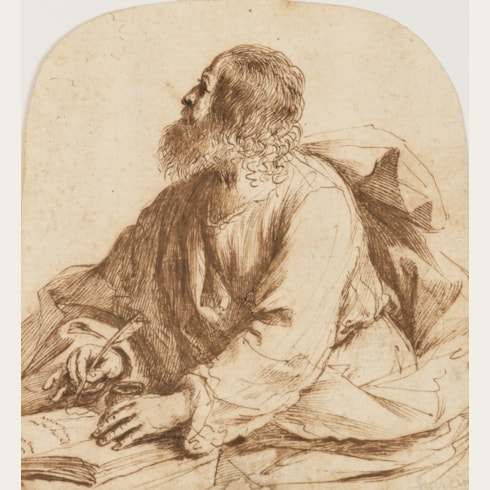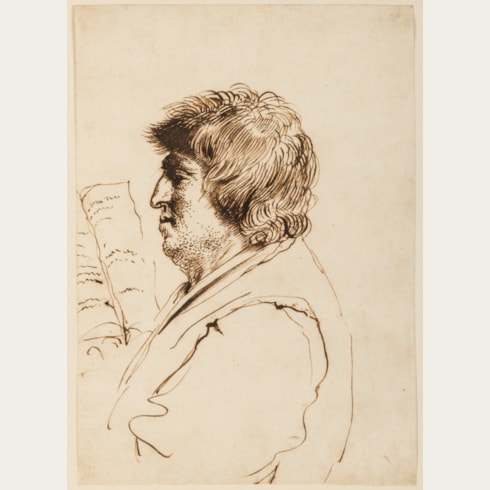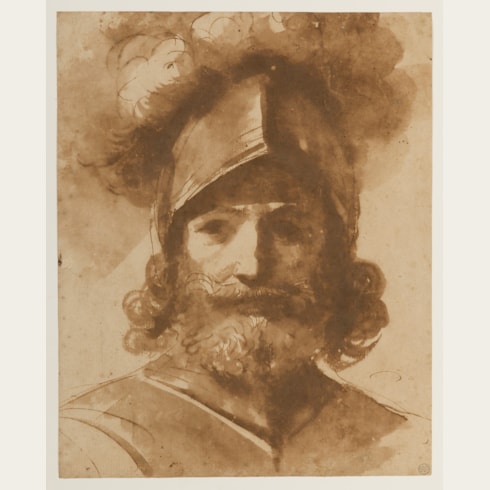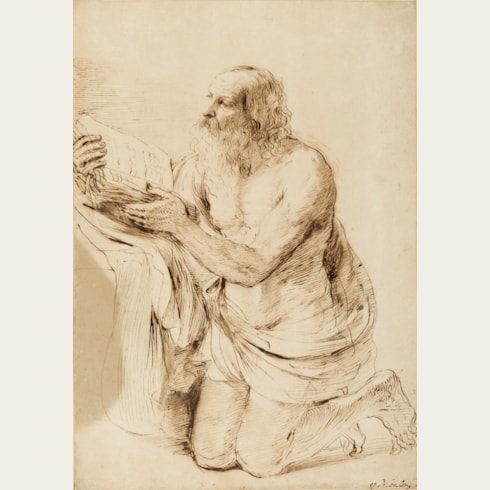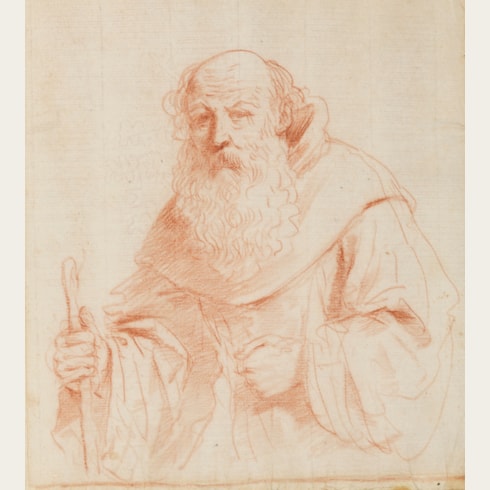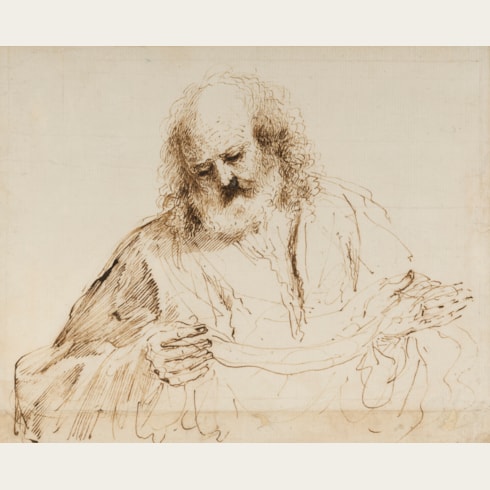Giovanni Francesco Barbieri GUERCINO
(Cento 1591 - Bologna 1666)
Saint Christopher and the Christ Child
Made up areas (not encroaching on the figures) at the left, top and right edges of the sheet, backed.
285 x 260 mm. (11 1/4 x 10 1/4 in.)
This drawing may be dated to the 1630’s, contemporary with such drawings as a Young Man Standing in the Royal Collection at Windsor Castle, which is a study for a lost painting of Apollo Flaying Marsyas of 1637. Also stylistically comparable is an equally highly finished red chalk drawing of Saints John the Baptist and John the Evangelist in the Los Angeles Country Museum of Art, which is related to an altarpiece commissioned for a church in Pesaro in 1631 and later destroyed.
Like a number of red chalk drawings by Guercino, a counterproof was made of the present sheet, and is today in the Royal Collection at Windsor Castle. A large number of such counterproofs, or offsets, were in the possession of Guercino’s heirs, and seem to have been made as a record of red chalk studies by the master before they were sold. In some cases, however, these counterproofs may have been made to sell in place of original drawings by Guercino that the Gennari wished to keep. As Denis Mahon and Nicholas Turner have pointed out, ‘It is possible that the Windsor offsets were sold by Guercino’s heirs instead of the original red chalk drawings that they were either unwilling to sell to Richard Dalton or that he was unwilling to buy; he was apparently satisfied with the purchase of some of these ‘reproductions’ as supplements to the large group of autograph drawings he had already secured.’ Over 230 of these offsets, some of which were crudely retouched by later hands, are today at Windsor. The existence among them of a counterproof taken from the present sheet would therefore indicate that this original drawing by Guercino was among those not sold by his heirs in the 18th century, and was instead retained by them in the Casa Gennari in Bologna.
Giovanni Francesco Barbieri, known as Il Guercino (‘the squinter’) because he was cross-eyed, was by the second decade of the 17th century one of the leading painters in the province of Emilia. Born in Cento, a small town between Bologna and Ferrara, Guercino was largely self-taught, although his early work was strongly influenced by the paintings of Ludovico Carracci. In 1617 he was summoned to Bologna by Alessandro Ludovisi, the Cardinal Archbishop of Bologna, and there painted a number of important altarpieces, typified by the Saint William Receiving the Monastic Habit, painted in 1620 and now in the Pinacoteca Nazionale in Bologna. When Ludovisi was elected Pope Gregory XV in 1621, Guercino was summoned to Rome to work for the pontiff and his nephew, Cardinal Ludovico Ludovisi. It was in Rome that Guercino painted some of his most celebrated works, notably the ceiling fresco of Aurora in the Casino Ludovisi and the large altarpiece of The Burial and Reception into Heaven of Saint Petronilla for an altar in Saint Peter’s. The papacy of Gregory XV was short-lived, however, and on the death of the Pope in 1623 Guercino returned to his native Cento. He remained working in Cento for twenty years, though he continued to receive commissions from patrons throughout Italy and beyond, and turned down offers of employment at the royal courts in London and Paris. Following the death of Guido Reni in 1642, Guercino moved his studio to Bologna, where he received commissions for religious pictures of the sort that Reni had specialized in, and soon inherited his position as the leading painter in the city.
Guercino was among the most prolific draughtsmen of the 17th century in Italy, and his preferred medium was pen and brown ink, although he also worked in red chalk, black chalk, and charcoal. He appears to have assiduously kept his drawings throughout his long career, and to have only parted with a few of them. Indeed, more drawings by him survive today than by any other Italian artist of the period. On his death in 1666 all of the numerous surviving sheets in his studio passed to his nephews and heirs, the painters Benedetto and Cesare Gennari, known as the ‘Casa Gennari’.
The drawings of Guercino, which include figural and compositional studies, landscapes, caricatures and genre scenes, have always been coveted by later collectors and connoisseurs. Indeed, the 18th century amateur Pierre-Jean Mariette noted of the artist that ‘Ce peintre a outre cela une plume tout-à-faite séduisante’. The largest extant group of drawings by Guercino is today in the Royal Collection at Windsor Castle; these were acquired from the Gennari family by King George III’s librarian, Richard Dalton, between about 1758 and 1764.
Provenance


















